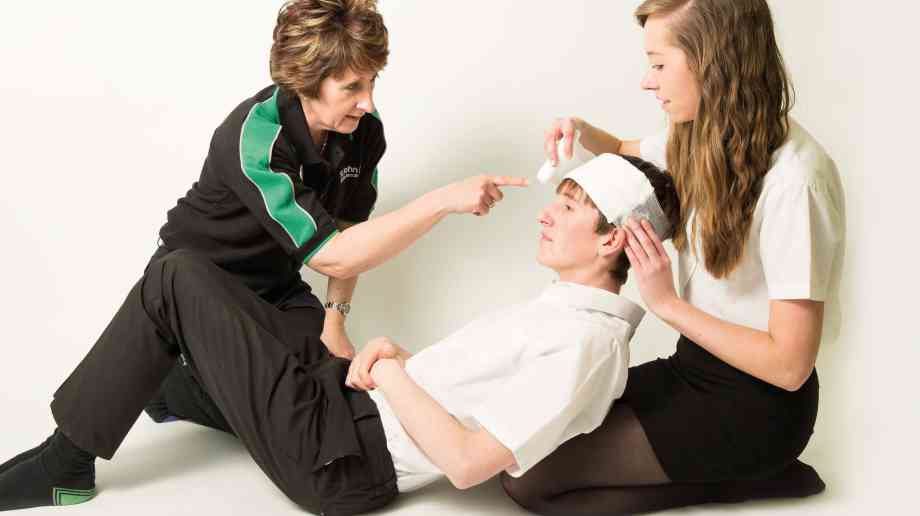
First aid – going beyond the call of duty
The benefits of knowing first aid go beyond being able to apply a bandage. St John Ambulance’s Andrew New discusses first aid in schools, and the importance of teaching the next generation.
It is without doubt that every school wants to be deemed a safe environment for its pupils, employees and visitors, and a duty of care is reasonably expected of such institutions. While the current Health and Safety Executive’s (HSE) health and safety regulations for the workplaces includes schools, worryingly there are no specific first aid requirements for those teaching young people above the age of five, like the Early Years foundation stage frame work implemented by the Department for Education (DfE) in March 2014 for carers of under five year-olds.
With little guidance on first aid provision for other educational institutions, the onus is on schools’ governing bodies or leadership teams to ensure they are well equipped to handle medical and accidental emergencies. In our experience, schools are generally good at this and since 2014’s Statutory Guidance for pupils with chronic medical illness has been put in place, they are provided with greater support to provide relevant training for employees to handle and manage students’ medical conditions. These are certainly positive steps, but the need for more robust planning should also encompass readiness to handle other potential hazards and eventualities – accidental injuries, unknown illnesses and conditions – in addition to those known to them.
As well as providing first aid education to school staff, we encourage life saving knowledge to be immersed into a school’s culture. If young people are educated in an environment that champions first aid, it benefits not only the immediate environment, but young peoples’ friends, families and the wider community. First aid provision is often seen as a simple tick box exercise but it’s so much more that – it can save lives and what could be more valuable then that?
No one size fits all
The landscape for health and safety regulations in the workplace has not vastly changed for some time but the HSE’s website is a good place to start if you need a reminder or guidance on what your school’s requirements are for first aid at work.
The HSE recommend schools to formulate their own health and safety strategies, which should include a thorough risk assessment, precautions of how these risks would be managed, a health and safety check list, and a suitable number of appropriately trained staff. A one size fits all approach doesn’t exist when it comes to these requirements; each school differs in needs, from the physical size of the school to any illnesses and conditions the children and staff may have. Therefore, you can see why it is necessary for schools to have their own bespoke plan for how first aid emergencies are to be tackled should they arise.
Inspiring a generation
In Autumn 2015, the DfE awarded St John Ambulance a portion of its Character Education Grant funding with the aim of developing 100,000 students’ skills in areas such as integrity, confidence, resilience and inspiring them to make a difference in communities.
The grant recognised the importance first aid training has in building these skills, and St John Ambulance rolled out a programme to extend the reach of its current schools training programme.
Small first aid lessons were offered to schools up and down the country as part of the funding, with St John Ambulance school trainers teaching skills such as how to put someone in the recovery position or how to stop someone from choking. In some instances, this introduction to first aid has led to the creation of ‘First Aid Champions’ in a number of schools, which has encouraged further lessons in learning life saving skills and utilising those skills in schools more widely.
Take Archbishop Holgate’s School in York as an example; after receiving basic training from the grant for its 15 to 17 year-olds, they have appointed First Aid Champions in Year 11 and 12 who are now in the process of setting up a First Aid Club. One of their activities will be a regular assembly session to extend first aid knowledge throughout the whole school.
A further example is Driffield Junior School in East Riding – it launched a lunchtime first aid club for its nine – and 10 year‑olds with 18 members already joined up. Some pupils have been inspired to practise their skills at home and by the time they reach Year 6, the school is hoping club members will have the knowledge and confidence to be playground first aid monitors.
Putting skills into action
Stories such as the one of 11 year-old Bethany Simpson, from Cornwall, are a pertinent example of why first aid should be more widely taught in schools. On March 15 2015, Bethany’s mum Jane and dad Robert had fallen asleep while watching TV. When Jane woke up, she noticed Robert’s breathing had become shallow, erratic and laboured, like he was in pain.
Jane quickly realised he was unresponsive, called 999, and followed the operator’s advice, including moving him onto his side to try and make him more comfortable. But, when Robert stopped breathing completely and the operator told her to give CPR, Jane completely froze. Fortunately, Bethany had heard her mother’s screams and went into the bedroom, reassured her mother than she knew what do to and took charge, giving Robert chest compressions to keep him alive until the ambulance arrived and could take over.
Thanks to Bethany’s swift actions, which she learned in school only a matter of weeks before with a St John Ambulance trainer, Robert is still alive today.
Accessibility of training
Bethany’s story is rare but not unheard of, so how can we equip more young people with these skills? Firstly, it is reassuring to know that the vast majority of teachers want first aid in the classroom (96 per cent). Less encouragingly, there is still some way to go before this becomes a reality; only 21 per cent of schools in England currently teach their students first aid. Teachers have expressed that they either don’t have enough time, resource, or training of their own to teach first aid in the classroom. Having this feedback is useful and allows us take on the challenge of overcoming these barriers with innovative projects, such as our series of Big First Aid Lesson videos and the Big First aid Lesson Live.
The series of Big First Aid Lesson videos are free, termly video resources which teach four key first aid skills to pupils of both primary and secondary school age. The live event, taking place this year on Friday 17 June with popular TV and paediatric doctor Dr Ranj, is a free, live stream joined by schools up and down the country. There will be interactive activities for students to take part in and we’ll be encouraging pupils who are tuning in to join the conversation live via Google Hangouts.
Last year, over 190,000 pupils tuned in to watch the lesson and learned skills such as how to help someone who is having an asthma attack or allergic reaction. This year, we’re trying to reach a quarter of a million children, so we’re urging schools and teachers to sign up to the event so their pupils don’t miss out on what could be the most valuable lesson they ever learn. What’s more, we have made the lesson as accessible as possible with schools only needing a white board and internet connection to join in. All of our Big First Aid Lesson resources are completely free and take no longer than an hour.
Making a change
While the enthusiasm for first aid education amongst teachers and pupils certainly exists, we cannot wait for regulatory bodies or the government to make it mandatory in order to adopt these changes in schools. Too many lives are lost needlessly when first aid could have helped and that, ultimately, is what it comes down to. Bethany’s story is a stark reminder of that and we must take responsibility to ensure young people are equipped with basic life saving skills and feel capable and confident to use them in and outside of the classroom.
Further information
www.sja.org.uk
Latest News
21/11/2025 - 09:37
The framework provides a practical guide to integrating education and health for better outcomes for children and young people.
20/11/2025 - 10:42
Parents will be able to get Enhanced Disclosure and Barring Service (DBS) checks when hiring private tutors, carers and therapists, among others.
20/11/2025 - 10:37
The government is funding research into developing smarter data tools to help identify children with special educational needs sooner.
20/11/2025 - 09:48
The programme prioritises schools with the highest proportion of pupils on free school meals to ensure the benefits are felt where it is most needed.
19/11/2025 - 09:41
Skills England has announced that development of the second round of Local Skills Improvement Plans (LSIPs) is now underway and has published guidance to steer the process







